Police
The police are a constituted body of persons empowered by a state to enforce the law, to ensure the safety, health and possessions of citizens, and to prevent crime and civil disorder.[1][2] Their lawful powers include arrest and the legitimized use of force. The term is most commonly associated with the police forces of a sovereign state that are authorized to exercise the police power of that state within a defined legal or territorial area of responsibility. Police forces are often defined as being separate from the military and other organizations involved in the defense of the state against foreign aggressors; however, gendarmerie are military units charged with civil policing.[3] Police forces are usually public sector services, funded through taxes.

Law enforcement is only part of policing activity.[4] Policing has included an array of activities in different situations, but the predominant ones are concerned with the preservation of order.[5] In some societies, in the late 18th and early 19th centuries, these developed within the context of maintaining the class system and the protection of private property.[6] Police forces have become ubiquitous in modern societies. Nevertheless, their role can be controversial, as some are involved to varying degrees in corruption, police brutality and the enforcement of authoritarian rule.
A police force may also be referred to as a police department, police service, constabulary, gendarmerie, crime prevention, protective services, law enforcement agency, civil guard or civic guard. Members may be referred to as police officers, troopers, sheriffs, constables, rangers, peace officers or civic/civil guards. Ireland differs from other English-speaking countries by using the Irish language terms Garda (singular) and Gardaí (plural), for both the national police force and its members. The word "police" is the most universal and similar terms can be seen in many non-English speaking countries.[7]
Numerous slang terms exist for the police. Many slang terms for police officers are decades or centuries old with lost etymology. One of the oldest, "cop", has largely lost its slang connotations and become a common colloquial term used both by the public and police officers to refer to their profession.[8]
Etymology
First attested in English in the early 15th century, initially in a range of senses encompassing '(public) policy; state; public order', the word police comes from Middle French police ('public order, administration, government'),[9] in turn from Latin politia,[10] which is the Latinisation of the Greek πολιτεία (politeia), "citizenship, administration, civil polity".[11] This is derived from πόλις (polis), "city".[12]
History
Ancient policing
Law enforcement in ancient China was carried out by "prefects" for thousands of years since it developed in both the Chu and Jin kingdoms of the Spring and Autumn period. In Jin, dozens of prefects were spread across the state, each having limited authority and employment period. They were appointed by local magistrates, who reported to higher authorities such as governors, who in turn were appointed by the emperor, and they oversaw the civil administration of their "prefecture", or jurisdiction. Under each prefect were "subprefects" who helped collectively with law enforcement in the area. Some prefects were responsible for handling investigations, much like modern police detectives. Prefects could also be women.[13] The concept of the "prefecture system" spread to other cultures such as Korea and Japan.
In ancient Greece, publicly owned slaves were used by magistrates as police. In Athens, a group of 300 Scythian slaves (the ῥαβδοῦχοι, "rod-bearers") was used to guard public meetings to keep order and for crowd control, and also assisted with dealing with criminals, handling prisoners, and making arrests. Other duties associated with modern policing, such as investigating crimes, were left to the citizens themselves.[14]
In the Roman empire, the army, rather than a dedicated police organization, provided security. Local watchmen were hired by cities to provide some extra security. Magistrates such as procurators fiscal and quaestors investigated crimes. There was no concept of public prosecution, so victims of crime or their families had to organize and manage the prosecution themselves.
Under the reign of Augustus, when the capital had grown to almost one million inhabitants, 14 wards were created; the wards were protected by seven squads of 1,000 men called "vigiles", who acted as firemen and nightwatchmen. Their duties included apprehending thieves and robbers and capturing runaway slaves. The vigiles were supported by the Urban Cohorts who acted as a heavy-duty anti-riot force and even the Praetorian Guard if necessary.
Post-classical policing
In medieval Spain, Santa Hermandades, or "holy brotherhoods", peacekeeping associations of armed individuals, were a characteristic of municipal life, especially in Castile. As medieval Spanish kings often could not offer adequate protection, protective municipal leagues began to emerge in the twelfth century against banditry and other rural criminals, and against the lawless nobility or to support one or another claimant to a crown.
These organizations were intended to be temporary, but became a long-standing fixture of Spain. The first recorded case of the formation of an hermandad occurred when the towns and the peasantry of the north united to police the pilgrim road to Santiago de Compostela in Galicia, and protect the pilgrims against robber knights.
Throughout the Middle Ages such alliances were frequently formed by combinations of towns to protect the roads connecting them, and were occasionally extended to political purposes. Among the most powerful was the league of North Castilian and Basque ports, the Hermandad de las marismas: Toledo, Talavera, and Villarreal.
As one of their first acts after end of the War of the Castilian Succession in 1479, Ferdinand II of Aragon and Isabella I of Castile established the centrally-organized and efficient Holy Brotherhood as a national police force. They adapted an existing brotherhood to the purpose of a general police acting under officials appointed by themselves, and endowed with great powers of summary jurisdiction even in capital cases. The original brotherhoods continued to serve as modest local police-units until their final suppression in 1835.
The Vehmic courts of Germany provided some policing in the absence of strong state institutions.
In France during the Middle Ages, there were two Great Officers of the Crown of France with police responsibilities: The Marshal of France and the Grand Constable of France. The military policing responsibilities of the Marshal of France were delegated to the Marshal's provost, whose force was known as the Marshalcy because its authority ultimately derived from the Marshal. The marshalcy dates back to the Hundred Years' War, and some historians trace it back to the early 12th century. Another organisation, the Constabulary (French: Connétablie), was under the command of the Constable of France. The constabulary was regularised as a military body in 1337. Under Francis I of France (who reigned 1515–1547), the Maréchaussée was merged with the Constabulary. The resulting force was also known as the Maréchaussée, or, formally, the Constabulary and Marshalcy of France.
The English system of maintaining public order since the Norman conquest was a private system of tithings, led by a constable, which was based on a social obligation for the good conduct of the others; more common was that local lords and nobles were responsible for maintaining order in their lands, and often appointed a constable, sometimes unpaid, to enforce the law. Eventually, constables became the first 'police' official to be tax-supported.[15] There was also a system of investigative "juries".
The Assize of Arms of 1252, which required the appointment of constables to summon men to arms, quell breaches of the peace, and to deliver offenders to the sheriffs or reeves, is cited as one of the earliest creation of the English police.[16] The Statute of Winchester of 1285 is also cited as the primary legislation regulating the policing of the country between the Norman Conquest and the Metropolitan Police Act 1829.[16][17]
From about 1500, private watchmen were funded by private individuals and organisations to carry out police functions. They were later nicknamed 'Charlies', probably after the reigning monarch King Charles II. Thief-takers were also rewarded for catching thieves and returning the stolen property.
The first use of the word police ("Polles") in English comes from the book "The Second Part of the Institutes of the Lawes of England" published in 1642.[18]
Early modern policing
The first centrally organised police force was created by the government of King Louis XIV in 1667 to police the city of Paris, then the largest city in Europe. The royal edict, registered by the Parlement of Paris on March 15, 1667 created the office of lieutenant général de police ("lieutenant general of police"), who was to be the head of the new Paris police force, and defined the task of the police as "ensuring the peace and quiet of the public and of private individuals, purging the city of what may cause disturbances, procuring abundance, and having each and everyone live according to their station and their duties".
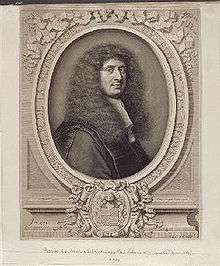
This office was first held by Gabriel Nicolas de la Reynie, who had 44 commissaires de police (police commissioners) under his authority. In 1709, these commissioners were assisted by inspecteurs de police (police inspectors). The city of Paris was divided into 16 districts policed by the commissaires, each assigned to a particular district and assisted by a growing bureaucracy. The scheme of the Paris police force was extended to the rest of France by a royal edict of October 1699, resulting in the creation of lieutenants general of police in all large French cities and towns.
After the French Revolution, Napoléon I reorganized the police in Paris and other cities with more than 5,000 inhabitants on February 17, 1800 as the Prefecture of Police. On March 12, 1829, a government decree created the first uniformed police in France, known as sergents de ville ("city sergeants"), which the Paris Prefecture of Police's website claims were the first uniformed policemen in the world.[19]
In 1737, George II began paying some London and Middlesex watchmen with tax monies, beginning the shift to government control. In 1749 Henry Fielding began organizing a force of quasi-professional constables known as the Bow Street Runners. The Macdaniel affair added further impetus for a publicly salaried police force that did not depend on rewards. Nonetheless, In 1828, there were privately financed police units in no fewer than 45 parishes within a 10-mile radius of London.
The word "police" was borrowed from French into the English language in the 18th century, but for a long time it applied only to French and continental European police forces. The word, and the concept of police itself, were "disliked as a symbol of foreign oppression" (according to Britannica 1911). Before the 19th century, the first use of the word "police" recorded in government documents in the United Kingdom was the appointment of Commissioners of Police for Scotland in 1714 and the creation of the Marine Police in 1798.
Modern police
In London
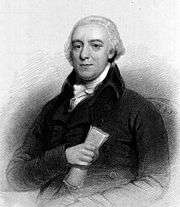
In 1797, Patrick Colquhoun was able to persuade the West Indies merchants who operated at the Pool of London on the River Thames, to establish a police force at the docks to prevent rampant theft that was causing annual estimated losses of £500,000 worth of cargo.[20] The idea of a police, as it then existed in France, was considered as a potentially undesirable foreign import. In building the case for the police in the face of England's firm anti-police sentiment, Colquhoun framed the political rationale on economic indicators to show that a police dedicated to crime prevention was "perfectly congenial to the principle of the British constitution". Moreover, he went so far as to praise the French system, which had reached "the greatest degree of perfection" in his estimation.[21]
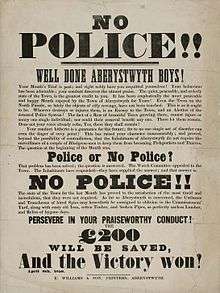
With the initial investment of £4,200, the new trial force of the Thames River Police began with about 50 men charged with policing 33,000 workers in the river trades, of whom Colquhoun claimed 11,000 were known criminals and "on the game". The force was a success after its first year, and his men had "established their worth by saving £122,000 worth of cargo and by the rescuing of several lives". Word of this success spread quickly, and the government passed the Marine Police Bill on 28 July 1800, transforming it from a private to public police agency; now the oldest police force in the world. Colquhoun published a book on the experiment, The Commerce and Policing of the River Thames. It found receptive audiences far outside London, and inspired similar forces in other cities, notably, New York City, Dublin, and Sydney.[20]
Colquhoun's utilitarian approach to the problem – using a cost-benefit argument to obtain support from businesses standing to benefit – allowed him to achieve what Henry and John Fielding failed for their Bow Street detectives. Unlike the stipendiary system at Bow Street, the river police were full-time, salaried officers prohibited from taking private fees.[22] His other contribution was the concept of preventive policing; his police were to act as a highly visible deterrent to crime by their permanent presence on the Thames.[21] Colquhoun's innovations were a critical development leading up to Robert Peel's "new" police three decades later.[23]
Meanwhile, the authorities in Glasgow, Scotland successfully petitioned the government to pass the Glasgow Police Act establishing the City of Glasgow Police in 1800. Other Scottish towns soon followed suit and set up their own police forces through acts of parliament.[24] In Ireland, the Irish Constabulary Act of 1822 marked the beginning of the Royal Irish Constabulary. The Act established a force in each barony with chief constables and inspectors general under the control of the civil administration at Dublin Castle. By 1841 this force numbered over 8,600 men.
Metropolitan police force
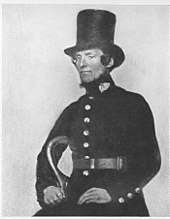
London was fast reaching a size unprecedented in world history, due to the onset of the Industrial Revolution.[25] It became clear that the locally maintained system of volunteer constables and "watchmen" was ineffective, both in detecting and preventing crime. A parliamentary committee was appointed to investigate the system of policing in London. Upon Sir Robert Peel being appointed as Home Secretary in 1822, he established a second and more effective committee, and acted upon its findings.
Royal assent to the Metropolitan Police Act 1829 was given[26] and the Metropolitan Police Service was established on September 29, 1829 in London as the first modern and professional police force in the world.[27][28][29]
Peel, widely regarded as the father of modern policing,[30] was heavily influenced by the social and legal philosophy of Jeremy Bentham, who called for a strong and centralised, but politically neutral, police force for the maintenance of social order, for the protection of people from crime and to act as a visible deterrent to urban crime and disorder.[31] Peel decided to standardise the police force as an official paid profession, to organise it in a civilian fashion, and to make it answerable to the public.[32]
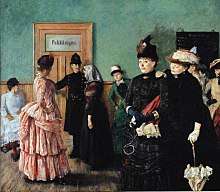
Due to public fears concerning the deployment of the military in domestic matters, Peel organised the force along civilian lines, rather than paramilitary. To appear neutral, the uniform was deliberately manufactured in blue, rather than red which was then a military colour, along with the officers being armed only with a wooden truncheon and a rattle to signal the need for assistance. Along with this, police ranks did not include military titles, with the exception of Sergeant.[33]
To distance the new police force from the initial public view of it as a new tool of government repression, Peel publicised the so-called Peelian principles, which set down basic guidelines for ethical policing:
- Every police officer should be issued a warrant card with a unique identification number to assure accountability for his actions.
- Whether the police are effective is not measured on the number of arrests but on the deterrence of crime.
- Above all else, an effective authority figure knows trust and accountability are paramount. Hence, Peel's most often quoted principle that "The police are the public and the public are the police."
The 1829 Metropolitan Police Act created a modern police force by limiting the purview of the force and its powers, and envisioning it as merely an organ of the judicial system. Their job was apolitical; to maintain the peace and apprehend criminals for the courts to process according to the law.[34] This was very different from the "continental model" of the police force that had been developed in France, where the police force worked within the parameters of the absolutist state as an extension of the authority of the monarch and functioned as part of the governing state.
In 1863, the Metropolitan Police were issued with the distinctive custodian helmet, and in 1884 they switched to the use of whistles that could be heard from much further away.[35] The Metropolitan Police became a model for the police forces in most countries, such as the United States, and most of the British Empire. Bobbies can still be found in many parts of the Commonwealth of Nations.[36]
Other countries
Australia
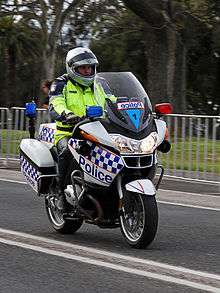
In Australia, the first police force having centralised command as well as jurisdiction over an entire colony was the South Australia Police, formed in 1838 under Henry Inman.
However, whilst the New South Wales Police Force was established in 1862, it was made up from a large number of policing and military units operating within the then Colony of New South Wales and traces its links back to the Royal Marines. The passing of the Police Regulation Act of 1862 essentially tightly regulated and centralised all of the police forces operating throughout the Colony of New South Wales.
The New South Wales Police Force remains the largest police force in Australia in terms of personnel and physical resources. It is also the only police force that requires its recruits to undertake university studies at the recruit level and has the recruit pay for their own education.
Brazil
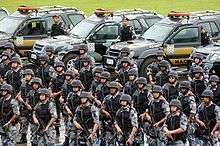
In 1566, the first police investigator of Rio de Janeiro was recruited. By the 17th century, most captaincies already had local units with law enforcement functions. On July 9, 1775 a Cavalry Regiment was created in the state of Minas Gerais for maintaining law and order. In 1808, the Portuguese royal family relocated to Brazil, because of the French invasion of Portugal. King João VI established the "Intendência Geral de Polícia" (General Police Intendancy) for investigations. He also created a Royal Police Guard for Rio de Janeiro in 1809. In 1831, after independence, each province started organizing its local "military police", with order maintenance tasks. The Federal Railroad Police was created in 1852, Federal Highway Police, was established in 1928, and Federal Police in 1967.
Canada
Established in 1729, the Royal Newfoundland Constabulary (RNC) was the first policing service founded in Canada. The establishment of modern policing services in the Canadas occurred during the 1830s, modelling their services after the London Metropolitan Police, and adopting the ideas of the Peelian principles.[37] The Toronto Police Service was established in 1834, whereas the Service de police de la Ville de Québec was established in 1840.[37]
A national police service, the Dominion Police, was founded in 1868. Initially the Dominion Police provided security for parliament, but its responsibilities quickly grew. In 1870, Rupert's Land and the North-Western Territory were incorporated into the country. In an effort to police its newly acquired territory, the Canadian government established the North-West Mounted Police in 1873 (renamed Royal North-West Mounted Police in 1904).[37] In 1920, the Dominion Police, and the Royal Northwest Mounted Police were amalgamated into the Royal Canadian Mounted Police (RCMP).[37]
The RCMP provides federal law enforcement; and law enforcement in eight provinces, and all three territories. The provinces of Ontario, and Quebec maintain their own provincial police forces, the Ontario Provincial Police (OPP), and the Sûreté du Québec (SQ). Policing in Newfoundland and Labrador is provided by the RCMP, and the RNC. The aforementioned services also provides municipal policing, although larger Canadian municipalities may establish form their own police service.
India
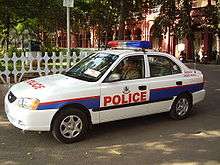
In India, the police are under the control of respective States and union territories and is known to be under State Police Services (SPS). The candidates selected for the SPS are usually posted as Deputy Superintendent of Police or Assistant Commissioner of Police once their probationary period ends. On prescribed satisfactory service in the SPS, the officers are nominated to the Indian Police Service.[39] The service color is usually dark blue and red, while the uniform color is Khaki.[40]
United States
In British North America, policing was initially provided by local elected officials. For instance, the New York Sheriff's Office was founded in 1626, and the Albany County Sheriff's Department in the 1660s. In the colonial period, policing was provided by elected sheriffs and local militias.
In 1789 the United States Marshals Service was established, followed by other federal services such as the U.S. Parks Police (1791)[41] and U.S. Mint Police (1792).[42] The first city police services were established in Philadelphia in 1751,[43] Richmond, Virginia in 1807,[44] Boston in 1838,[45] and New York in 1845.[46] The U.S. Secret Service was founded in 1865 and was for some time the main investigative body for the federal government.[47]
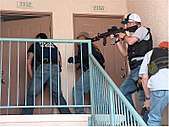
In the American Old West, policing was often of very poor quality. The Army often provided some policing alongside poorly resourced sheriffs and temporarily organized posses. Public organizations were supplemented by private contractors, notably the Pinkerton National Detective Agency, which was hired by individuals, businessmen, local governments and the federal government. At its height, the Pinkerton Agency's numbers exceeded those of the United States Army.
In recent years, in addition to federal, state, and local forces, some special districts have been formed to provide extra police protection in designated areas. These districts may be known as neighborhood improvement districts, crime prevention districts, or security districts.[48]
Development of theory
Michel Foucault claims that the contemporary concept of police as a paid and funded functionary of the state was developed by German and French legal scholars and practitioners in Public administration and Statistics in the 17th and early 18th centuries, most notably with Nicolas Delamare's Traité de la Police ("Treatise on the Police"), first published in 1705. The German Polizeiwissenschaft (Science of Police) first theorized by Philipp von Hörnigk a 17th-century Austrian Political economist and civil servant and much more famously by Johann Heinrich Gottlob Justi who produced an important theoretical work known as Cameral science on the formulation of police.[49] Foucault cites Magdalene Humpert author of Bibliographie der Kameralwissenschaften (1937) in which the author makes note of a substantial bibliography was produced of over 4000 pieces of the practice of Polizeiwissenschaft however, this maybe a mistranslation of Foucault's own work the actual source of Magdalene Humpert states over 14,000 items were produced from the 16th century dates ranging from 1520–1850.[50][51]
As conceptualized by the Polizeiwissenschaft, according to Foucault the police had an administrative, economic and social duty ("procuring abundance"). It was in charge of demographic concerns and needed to be incorporated within the western political philosophy system of raison d'état and therefore giving the superficial appearance of empowering the population (and unwittingly supervising the population), which, according to mercantilist theory, was to be the main strength of the state. Thus, its functions largely overreached simple law enforcement activities and included public health concerns, urban planning (which was important because of the miasma theory of disease; thus, cemeteries were moved out of town, etc.), and surveillance of prices.[52]
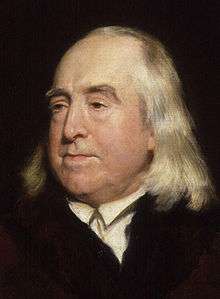
The concept of preventive policing, or policing to deter crime from taking place, gained influence in the late 18th century. Police Magistrate John Fielding, head of the Bow Street Runners, argued that "...it is much better to prevent even one man from being a rogue than apprehending and bringing forty to justice."[53]
The Utilitarian philosopher, Jeremy Bentham, promoted the views of Italian Marquis Cesare Beccaria, and disseminated a translated version of "Essay on Crime in Punishment". Bentham espoused the guiding principle of "the greatest good for the greatest number:
It is better to prevent crimes than to punish them. This is the chief aim of every good system of legislation, which is the art of leading men to the greatest possible happiness or to the least possible misery, according to calculation of all the goods and evils of life.[53]
Patrick Colquhoun's influential work, A Treatise on the Police of the Metropolis (1797) was heavily influenced by Benthamite thought. Colquhoun's Thames River Police was founded on these principles, and in contrast to the Bow Street Runners, acted as a deterrent by their continual presence on the riverfront, in addition to being able to intervene if they spotted a crime in progress.[54]
Edwin Chadwick's 1829 article, "Preventive police" in the London Review,[55] argued that prevention ought to be the primary concern of a police body, which was not the case in practice. The reason, argued Chadwick, was that "A preventive police would act more immediately by placing difficulties in obtaining the objects of temptation." In contrast to a deterrent of punishment, a preventive police force would deter criminality by making crime cost-ineffective – "crime doesn't pay". In the second draft of his 1829 Police Act, the "object" of the new Metropolitan Police, was changed by Robert Peel to the "principal object," which was the "prevention of crime."[56] Later historians would attribute the perception of England's "appearance of orderliness and love of public order" to the preventive principle entrenched in Peel's police system.[57]
Development of modern police forces around the world was contemporary to the formation of the state, later defined by sociologist Max Weber as achieving a "monopoly on the legitimate use of physical force" and which was primarily exercised by the police and the military. Marxist theory situates the development of the modern state as part of the rise of capitalism, in which the police are one component of the bourgeoisie's repressive apparatus for subjugating the working class. By contrast, the Peelian principles argue that "the power of the police...is dependent on public approval of their existence, actions and behavior", a philosophy known as policing by consent.
Personnel and organization
Police forces include both preventive (uniformed) police and detectives. Terminology varies from country to country. Police functions include protecting life and property, enforcing criminal law, criminal investigations, regulating traffic, crowd control, public safety duties, civil defense, emergency management, searching for missing persons, lost property and other duties concerned with public order. Regardless of size, police forces are generally organized as a hierarchy with multiple ranks. The exact structures and the names of rank vary considerably by country.
Uniformed police
See also: Uniform#Police
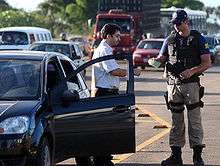
The police who wear uniforms make up the majority of a police service's personnel. Their main duty is to respond to calls to the emergency telephone number. When not responding to these call-outs, they will do work aimed at preventing crime, such as patrols. The uniformed police are known by varying names such as preventive police, the uniform branch/division, administrative police, order police, the patrol bureau/division or patrol. In Australia and the United Kingdom, patrol personnel are also known as "general duties" officers.[58] Atypically, Brazil's preventive police are known as Military Police.[59]
As implied by the name, uniformed police wear uniforms. They perform functions that require an immediate recognition of an officer's legal authority and a potential need for force. Most commonly this means intervening to stop a crime in progress and securing the scene of a crime that has already happened. Besides dealing with crime, these officers may also manage and monitor traffic, carry out community policing duties, maintain order at public events or carry out searches for missing people (in 2012, the latter accounted for 14% of police time in the United Kingdom).[60] As most of these duties must be available as a 24/7 service, uniformed police are required to do shift work.
Detectives
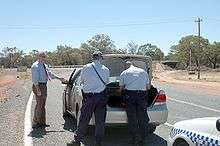
Police detectives are responsible for investigations and detective work. Detectives may be called Investigations Police, Judiciary/Judicial Police, and Criminal Police. In the UK, they are often referred to by the name of their department, the Criminal Investigation Department (CID). Detectives typically make up roughly 15–25% of a police service's personnel.
Detectives, in contrast to uniformed police, typically wear 'business attire' in bureaucratic and investigative functions where a uniformed presence would be either a distraction or intimidating, but a need to establish police authority still exists. "Plainclothes" officers dress in attire consistent with that worn by the general public for purposes of blending in.
In some cases, police are assigned to work "undercover", where they conceal their police identity to investigate crimes, such as organized crime or narcotics crime, that are unsolvable by other means. In some cases this type of policing shares aspects with espionage.
The relationship between detective and uniformed branches varies by country. In the United States, there is high variation within the country itself. Many US police departments require detectives to spend some time on temporary assignments in the patrol division. The argument is that rotating officers helps the detectives to better understand the uniformed officers' work, to promote cross-training in a wider variety of skills, and prevent "cliques" that can contribute to corruption or other unethical behavior. Conversely, some countries regard detective work as being an entirely separate profession, with detectives working in separate agencies and recruited without having to serve in uniform. A common compromise in English-speaking countries is that most detectives are recruited from the uniformed branch, but once qualified they tend to spend the rest of their careers in the detective branch.
Another point of variation is whether detectives have extra status. In some forces, such as the New York Police Department and Philadelphia Police Department, a regular detective holds a higher rank than a regular police officer. In others, such as British police forces and Canadian police forces, a regular detective has equal status with regular uniformed officers. Officers still have to take exams to move to the detective branch, but the move is regarded as being a specialization, rather than a promotion.
Volunteers and auxiliary police
Police services often include part-time or volunteer officers, some of whom have other jobs outside policing. These may be paid positions or entirely volunteer. These are known by a variety of names, such as reserves, auxiliary police or special constables.
Other volunteer organizations work with the police and perform some of their duties. Groups in the U.S. including Retired and Senior Volunteer Program, Community Emergency Response Team and the Boy Scout's Police Explorers provide training, traffic and crowd control, disaster response and other policing duties. In the U.S., the Volunteers in Police Service program assists over 200,000 volunteers in almost 2,000 programs.[61] Volunteers may also work on the support staff. Examples of these schemes are Volunteers in Police Service in the US, Police Support Volunteers in the UK and Volunteers in Policing in New South Wales.
Specialized units
Specialized preventive and detective groups, or Specialist Investigation Departments exist within many law enforcement organizations either for dealing with particular types of crime, such as traffic law enforcement, K9, crash investigation, homicide, or fraud; or for situations requiring specialized skills, such as underwater search, aviation, explosive device disposal ("bomb squad"), and computer crime.
Most larger jurisdictions also employ specially selected and trained quasi-military units armed with military-grade weapons for the purposes of dealing with particularly violent situations beyond the capability of a patrol officer response, including high-risk warrant service and barricaded suspects. In the United States these units go by a variety of names, but are commonly known as SWAT (Special Weapons And Tactics) teams.
In counterinsurgency-type campaigns, select and specially trained units of police armed and equipped as light infantry have been designated as police field forces who perform paramilitary-type patrols and ambushes whilst retaining their police powers in areas that were highly dangerous.[62]
Because their situational mandate typically focuses on removing innocent bystanders from dangerous people and dangerous situations, not violent resolution, they are often equipped with non-lethal tactical tools like chemical agents, "flashbang" and concussion grenades, and rubber bullets. The Specialist Firearms Command (CO19)[63] of the Metropolitan Police in London is a group of armed police used in dangerous situations including hostage taking, armed robbery/assault and terrorism.
Administrative duties
Police may have administrative duties that are not directly related to enforcing the law, such as issuing firearms licenses. The extent that police have these functions varies among countries, with police in France, Germany, and other continental European countries handling such tasks to a greater extent than British counterparts.[58]
Military police
Military police may refer to:
- a section of the military solely responsible for policing the armed forces (referred to as provosts)
- a section of the military responsible for policing in both the armed forces and in the civilian population (most gendarmeries, such as the French Gendarmerie, the Italian Carabinieri, the Spanish Guardia Civil and the Portuguese Republican National Guard also known as GNR)
- a section of the military solely responsible for policing the civilian population (such as the Romanian Gendarmerie)
- the civilian preventive police of a Brazilian state (Policia Militar)
- a special military law enforcement service, like the Russian Military Police
Religious police
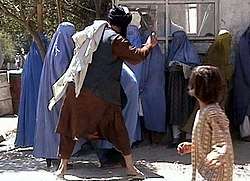
Some Islamic societies have religious police, who enforce the application of Islamic Sharia law. Their authority may include the power to arrest unrelated men and women caught socializing, anyone engaged in homosexual behavior or prostitution; to enforce Islamic dress codes, and store closures during Islamic prayer time.[64][65]
They enforce Muslim dietary laws, prohibit the consumption or sale of alcoholic beverages and pork, and seize banned consumer products and media regarded as un-Islamic, such as CDs/DVDs of various Western musical groups, television shows and film.[64][65] In Saudi Arabia, the Mutaween actively prevent the practice or proselytizing of non-Islamic religions within Saudi Arabia, where they are banned.[64][65]
International policing
Most countries are members of the International Criminal Police Organization (Interpol), established to detect and fight transnational crime and provide for international co-operation and co-ordination of other police activities, such as notifying relatives of the death of foreign nationals. Interpol does not conduct investigations or arrests by itself, but only serves as a central point for information on crime, suspects and criminals. Political crimes are excluded from its competencies.
The terms international policing, transnational policing, and/or global policing began to be used from the early 1990s onwards to describe forms of policing that transcended the boundaries of the sovereign nation-state (Nadelmann, 1993),[66] (Sheptycki, 1995).[67] These terms refer in variable ways to practices and forms for policing that, in some sense, transcend national borders. This includes a variety of practices, but international police cooperation, criminal intelligence exchange between police agencies working in different nation-states, and police development-aid to weak, failed or failing states are the three types that have received the most scholarly attention.
Historical studies reveal that policing agents have undertaken a variety of cross-border police missions for many years (Deflem, 2002).[68] For example, in the 19th century a number of European policing agencies undertook cross-border surveillance because of concerns about anarchist agitators and other political radicals. A notable example of this was the occasional surveillance by Prussian police of Karl Marx during the years he remained resident in London. The interests of public police agencies in cross-border co-operation in the control of political radicalism and ordinary law crime were primarily initiated in Europe, which eventually led to the establishment of Interpol before the Second World War. There are also many interesting examples of cross-border policing under private auspices and by municipal police forces that date back to the 19th century (Nadelmann, 1993).[66] It has been established that modern policing has transgressed national boundaries from time to time almost from its inception. It is also generally agreed that in the post–Cold War era this type of practice became more significant and frequent (Sheptycki, 2000).[69]
Not a lot of empirical work on the practices of inter/transnational information and intelligence sharing has been undertaken. A notable exception is James Sheptycki's study of police cooperation in the English Channel region (2002),[70] which provides a systematic content analysis of information exchange files and a description of how these transnational information and intelligence exchanges are transformed into police case-work. The study showed that transnational police information sharing was routinized in the cross-Channel region from 1968 on the basis of agreements directly between the police agencies and without any formal agreement between the countries concerned. By 1992, with the signing of the Schengen Treaty, which formalized aspects of police information exchange across the territory of the European Union, there were worries that much, if not all, of this intelligence sharing was opaque, raising questions about the efficacy of the accountability mechanisms governing police information sharing in Europe (Joubert and Bevers, 1996).[71]
Studies of this kind outside of Europe are even rarer, so it is difficult to make generalizations, but one small-scale study that compared transnational police information and intelligence sharing practices at specific cross-border locations in North America and Europe confirmed that low visibility of police information and intelligence sharing was a common feature (Alain, 2001).[72] Intelligence-led policing is now common practice in most advanced countries (Ratcliffe, 2007)[73] and it is likely that police intelligence sharing and information exchange has a common morphology around the world (Ratcliffe, 2007).[73] James Sheptycki has analyzed the effects of the new information technologies on the organization of policing-intelligence and suggests that a number of 'organizational pathologies' have arisen that make the functioning of security-intelligence processes in transnational policing deeply problematic. He argues that transnational police information circuits help to "compose the panic scenes of the security-control society".[74] The paradoxical effect is that, the harder policing agencies work to produce security, the greater are feelings of insecurity.
Police development-aid to weak, failed or failing states is another form of transnational policing that has garnered attention. This form of transnational policing plays an increasingly important role in United Nations peacekeeping and this looks set to grow in the years ahead, especially as the international community seeks to develop the rule of law and reform security institutions in States recovering from conflict (Goldsmith and Sheptycki, 2007)[75] With transnational police development-aid the imbalances of power between donors and recipients are stark and there are questions about the applicability and transportability of policing models between jurisdictions (Hills, 2009).[76]
Perhaps the greatest question regarding the future development of transnational policing is: in whose interest is it? At a more practical level, the question translates into one about how to make transnational policing institutions democratically accountable (Sheptycki, 2004).[77] For example, according to the Global Accountability Report for 2007 (Lloyd, et al. 2007) Interpol had the lowest scores in its category (IGOs), coming in tenth with a score of 22% on overall accountability capabilities (p. 19).[78] As this report points out, and the existing academic literature on transnational policing seems to confirm, this is a secretive area and one not open to civil society involvement.
Equipment
Weapons
In many jurisdictions, police officers carry firearms, primarily handguns, in the normal course of their duties. In the United Kingdom (except Northern Ireland), Iceland, Ireland, Norway, New Zealand,[79] and Malta, with the exception of specialist units, officers do not carry firearms as a matter of course. Norwegian police carry firearms in their vehicles, but not on their duty belts, and must obtain authorisation before the weapons can be removed from the vehicle.
Police often have specialist units for handling armed offenders, and similar dangerous situations, and can (depending on local laws), in some extreme circumstances, call on the military (since Military Aid to the Civil Power is a role of many armed forces). Perhaps the most high-profile example of this was, in 1980 the Metropolitan Police handing control of the Iranian Embassy Siege to the Special Air Service.
They can also be armed with non-lethal (more accurately known as "less than lethal" or "less-lethal") weaponry, particularly for riot control. Non-lethal weapons include batons, tear gas, riot control agents, rubber bullets, riot shields, water cannons and electroshock weapons. Police officers typically carry handcuffs to restrain suspects. The use of firearms or deadly force is typically a last resort only to be used when necessary to save human life, although some jurisdictions (such as Brazil) allow its use against fleeing felons and escaped convicts. A "shoot-to-kill" policy was recently introduced in South Africa, which allows police to use deadly force against any person who poses a significant threat to them or civilians.[80] With the country having one of the highest rates of violent crime, president Jacob Zuma states that South Africa needs to handle crime differently from other countries.[81]
Communications
Modern police forces make extensive use of two-way radio communications equipment, carried both on the person and installed in vehicles, to co-ordinate their work, share information, and get help quickly. In recent years, vehicle-installed mobile data terminals have enhanced the ability of police communications, enabling easier dispatching of calls, criminal background checks on persons of interest to be completed in a matter of seconds, and updating officers' daily activity log and other, required reports on a real-time basis. Other common pieces of police equipment include flashlights/torches, whistles, police notebooks and "ticket books" or citations. Some police departments have developed advanced computerized data display and communication systems to bring real time data to officers, one example being the NYPD's Domain Awareness System.
Vehicles
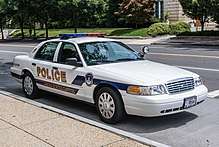
Police vehicles are used for detaining, patrolling and transporting. The average police patrol vehicle is a specially modified, four door sedan (saloon in British English). Police vehicles are usually marked with appropriate logos and are equipped with sirens and flashing light bars to aid in making others aware of police presence.
Unmarked vehicles are used primarily for sting operations or apprehending criminals without alerting them to their presence. Some police forces use unmarked or minimally marked cars for traffic law enforcement, since drivers slow down at the sight of marked police vehicles and unmarked vehicles make it easier for officers to catch speeders and traffic violators. This practice is controversial, with for example, New York State banning this practice in 1996 on the grounds that it endangered motorists who might be pulled over by people impersonating police officers.[82]
Motorcycles are also commonly used, particularly in locations that a car may not be able to reach, to control potential public order situations involving meetings of motorcyclists and often in escort duties where motorcycle police officers can quickly clear a path for escorted vehicles. Bicycle patrols are used in some areas because they allow for more open interaction with the public. In addition, their quieter operation can facilitate approaching suspects unawares and can help in pursuing them attempting to escape on foot.
Police forces use an array of specialty vehicles such as helicopters, airplanes, watercraft, mobile command posts, vans, trucks, all-terrain vehicles, motorcycles, and armored vehicles.
Other safety equipment
Police cars may also contain fire extinguishers[83][84] or defibrillators.[85]
Strategies
The advent of the police car, two-way radio, and telephone in the early 20th century transformed policing into a reactive strategy that focused on responding to calls for service.[86] With this transformation, police command and control became more centralized.
In the United States, August Vollmer introduced other reforms, including education requirements for police officers.[87] O.W. Wilson, a student of Vollmer, helped reduce corruption and introduce professionalism in Wichita, Kansas, and later in the Chicago Police Department.[88] Strategies employed by O.W. Wilson included rotating officers from community to community to reduce their vulnerability to corruption, establishing of a non-partisan police board to help govern the police force, a strict merit system for promotions within the department, and an aggressive recruiting drive with higher police salaries to attract professionally qualified officers.[89] During the professionalism era of policing, law enforcement agencies concentrated on dealing with felonies and other serious crime and conducting visible car patrols in between, rather than broader focus on crime prevention.[90]
The Kansas City Preventive Patrol study in the early 1970s showed flaws in this strategy. It found that aimless car patrols did little to deter crime and often went unnoticed by the public. Patrol officers in cars had insufficient contact and interaction with the community, leading to a social rift between the two.[91] In the 1980s and 1990s, many law enforcement agencies began to adopt community policing strategies, and others adopted problem-oriented policing.
Broken windows' policing was another, related approach introduced in the 1980s by James Q. Wilson and George L. Kelling, who suggested that police should pay greater attention to minor "quality of life" offenses and disorderly conduct. The concept behind this method is simple: broken windows, graffiti, and other physical destruction or degradation of property create an environment in which crime and disorder is more likely. The presence of broken windows and graffiti sends a message that authorities do not care and are not trying to correct problems in these areas. Therefore, correcting these small problems prevents more serious criminal activity.[92] The theory was popularised in the early 1990s by police chief William J. Bratton and New York City Mayor Rudy Giuliani.
Building upon these earlier models, intelligence-led policing has also become an important strategy. Intelligence-led policing and problem-oriented policing are complementary strategies, both of which involve systematic use of information.[93] Although it still lacks a universally accepted definition, the crux of intelligence-led policing is an emphasis on the collection and analysis of information to guide police operations, rather than the reverse.[94]
A related development is evidence-based policing. In a similar vein to evidence-based policy, evidence-based policing is the use of controlled experiments to find which methods of policing are more effective. Leading advocates of evidence-based policing include the criminologist Lawrence W. Sherman and philanthropist Jerry Lee. Findings from controlled experiments include the Minneapolis Domestic Violence Experiment,[95] evidence that patrols deter crime if they are concentrated in crime hotspots[96] and that restricting police powers to shoot suspects does not cause an increase in crime or violence against police officers.[97] Use of experiments to assess the usefulness of strategies has been endorsed by many police services and institutions, including the US Police Foundation and the UK College of Policing.
Power restrictions
In many nations, criminal procedure law has been developed to regulate officers' discretion, so that they do not arbitrarily or unjustly exercise their powers of arrest, search and seizure, and use of force. In the United States, Miranda v. Arizona led to the widespread use of Miranda warnings or constitutional warnings.
In Miranda the court created safeguards against self-incriminating statements made after an arrest. The court held that "The prosecution may not use statements, whether exculpatory or inculpatory, stemming from questioning initiated by law enforcement officers after a person has been taken into custody or otherwise deprived of his freedom of action in any significant way, unless it demonstrates the use of procedural safeguards effective to secure the Fifth Amendment's privilege against self-incrimination"[98]
Police in the United States are also prohibited from holding criminal suspects for more than a reasonable amount of time (usually 24–48 hours) before arraignment, using torture, abuse or physical threats to extract confessions, using excessive force to effect an arrest, and searching suspects' bodies or their homes without a warrant obtained upon a showing of probable cause. The four exceptions to the constitutional requirement of a search warrant are:
- Consent
- Search incident to arrest
- Motor vehicle searches
- Exigent circumstances
In Terry v. Ohio (1968) the court divided seizure into two parts, the investigatory stop and arrest. The court further held that during an investigatory stop a police officer's search " [is] confined to what [is] minimally necessary to determine whether [a suspect] is armed, and the intrusion, which [is] made for the sole purpose of protecting himself and others nearby, [is] confined to ascertaining the presence of weapons" (U.S. Supreme Court). Before Terry, every police encounter constituted an arrest, giving the police officer the full range of search authority. Search authority during a Terry stop (investigatory stop) is limited to weapons only.[98]
Using deception for confessions is permitted, but not coercion. There are exceptions or exigent circumstances such as an articulated need to disarm a suspect or searching a suspect who has already been arrested (Search Incident to an Arrest). The Posse Comitatus Act severely restricts the use of the military for police activity, giving added importance to police SWAT units.
British police officers are governed by similar rules, such as those introduced to England and Wales under the Police and Criminal Evidence Act 1984 (PACE), but generally have greater powers. They may, for example, legally search any suspect who has been arrested, or their vehicles, home or business premises, without a warrant, and may seize anything they find in a search as evidence.
All police officers in the United Kingdom, whatever their actual rank, are 'constables' in terms of their legal position. This means that a newly appointed constable has the same arrest powers as a Chief Constable or Commissioner. However, certain higher ranks have additional powers to authorize certain aspects of police operations, such as a power to authorize a search of a suspect's house (section 18 PACE in England and Wales) by an officer of the rank of Inspector, or the power to authorize a suspect's detention beyond 24 hours by a Superintendent.
Conduct, accountability and public confidence
Police services commonly include units for investigating crimes committed by the police themselves. These units are typically called Inspectorate-General, or in the US, "internal affairs". In some countries separate organizations outside the police exist for such purposes, such as the British Independent Office for Police Conduct.
Likewise, some state and local jurisdictions, for example, Springfield, Illinois[99] have similar outside review organizations. The Police Service of Northern Ireland is investigated by the Police Ombudsman for Northern Ireland, an external agency set up as a result of the Patten report into policing the province. In the Republic of Ireland the Garda Síochána is investigated by the Garda Síochána Ombudsman Commission, an independent commission that replaced the Garda Complaints Board in May 2007.
The Special Investigations Unit of Ontario, Canada, is one of only a few civilian agencies around the world responsible for investigating circumstances involving police and civilians that have resulted in a death, serious injury, or allegations of sexual assault. The agency has made allegations of insufficient cooperation from various police services hindering their investigations.[100]
In Hong Kong, any allegations of corruption within the police will be investigated by the Independent Commission Against Corruption and the Independent Police Complaints Council, two agencies which are independent of the police force.
Due to a long-term decline in public confidence for law enforcement in the United States, body cameras worn by police officers are under consideration.[101]
Use of force

Police forces also find themselves under criticism for their use of force, particularly deadly force. Specifically, tension increases when a police officer of one ethnic group harms or kills a suspect of another one. In the United States, such events occasionally spark protests and accusations of racism against police and allegations that police departments practice racial profiling.
In the United States since the 1960s, concern over such issues has increasingly weighed upon law enforcement agencies, courts and legislatures at every level of government. Incidents such as the 1965 Watts Riots, the videotaped 1991 beating by Los Angeles Police officers of Rodney King, and the riot following their acquittal have been suggested by some people to be evidence that U.S. police are dangerously lacking in appropriate controls.
The fact that this trend has occurred contemporaneously with the rise of the civil rights movement, the "War on Drugs", and a precipitous rise in violent crime from the 1960s to the 1990s has made questions surrounding the role, administration and scope of police authority increasingly complicated.
Police departments and the local governments that oversee them in some jurisdictions have attempted to mitigate some of these issues through community outreach programs and community policing to make the police more accessible to the concerns of local communities, by working to increase hiring diversity, by updating training of police in their responsibilities to the community and under the law, and by increased oversight within the department or by civilian commissions.
In cases in which such measures have been lacking or absent, civil lawsuits have been brought by the United States Department of Justice against local law enforcement agencies, authorized under the 1994 Violent Crime Control and Law Enforcement Act. This has compelled local departments to make organizational changes, enter into consent decree settlements to adopt such measures, and submit to oversight by the Justice Department.[102]
Protection of individuals
Since 1855, the Supreme Court of the United States has consistently ruled that law enforcement officers have no duty to protect any individual, despite the motto "protect and serve". Their duty is to enforce the law in general. The first such case was in 1855.[103] The most recent in 2005: Castle Rock v. Gonzales.[104]
In contrast, the police are entitled to protect private rights in some jurisdictions. To ensure that the police would not interfere in the regular competencies of the courts of law, some police acts require that the police may only interfere in such cases where protection from courts cannot be obtained in time, and where, without interference of the police, the realization of the private right would be impeded.[105] This would, for example, allow police to establish a restaurant guest's identity and forward it to the innkeeper in a case where the guest cannot pay the bill at nighttime because his wallet had just been stolen from the restaurant table.
In addition, there are federal law enforcement agencies in the United States whose mission includes providing protection for executives such as the president and accompanying family members, visiting foreign dignitaries, and other high-ranking individuals.[106] Such agencies include the U.S. Secret Service and the U.S. Park Police.
By country
Police forces are usually organized and funded by some level of government. The level of government responsible for policing varies from place to place, and may be at the national, regional or local level. Some countries have police forces that serve the same territory, with their jurisdiction depending on the type of crime or other circumstances. Other countries, such as Austria, Chile, Israel, New Zealand, the Philippines, South Africa and Sweden, have a single national police force.[107]
In some places with multiple national police forces, one common arrangement is to have a civilian police force and a paramilitary gendarmerie, such as the Police Nationale and National Gendarmerie in France.[58] The French policing system spread to other countries through the Napoleonic Wars[108] and the French colonial empire.[109][110] Another example is the Policía Nacional and Guardia Civil in Spain. In both France and Spain, the civilian force polices urban areas and the paramilitary force polices rural areas. Italy has a similar arrangement with the Polizia di Stato and Carabinieri, though their jurisdictions overlap more. Some countries have separate agencies for uniformed police and detectives, such as the Military Police and Civil Police in Brazil and the Carabineros and Investigations Police in Chile.
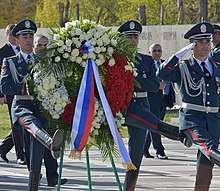
Other countries have sub-national police forces, but for the most part their jurisdictions do not overlap. In many countries, especially federations, there may be two or more tiers of police force, each serving different levels of government and enforcing different subsets of the law. In Australia and Germany, the majority of policing is carried out by state (i.e. provincial) police forces, which are supplemented by a federal police force. Though not a federation, the United Kingdom has a similar arrangement, where policing is primarily the responsibility of a regional police force and specialist units exist at the national level. In Canada, the Royal Canadian Mounted Police (RCMP) are the federal police, while municipalities can decide whether to run a local police service or to contract local policing duties to a larger one. Most urban areas have a local police service, while most rural areas contract it to the RCMP, or to the provincial police in Ontario and Quebec.
The United States has a highly decentralized and fragmented system of law enforcement, with over 17,000 state and local law enforcement agencies.[111] These agencies include local police, county law enforcement (often in the form of a sheriff's office, or county police), state police and federal law enforcement agencies. Federal agencies, such as the FBI, only have jurisdiction over federal crimes or those that involve more than one state. Other federal agencies have jurisdiction over a specific type of crime. Examples include the Federal Protective Service, which patrols and protects government buildings; the postal police, which protect postal buildings, vehicles and items; the Park Police, which protect national parks; and Amtrak Police, which patrol Amtrak stations and trains. There are also some government agencies that perform police functions in addition to other duties, such as the Coast Guard.
See also
- Chief of police
- Constable
- Criminal citation
- Criminal justice
- Fraternal Order of Police
- Highway patrol
- Law enforcement agency
- Law enforcement and society
- Law enforcement by country
- Militsiya
- The Officer Down Memorial Page, Inc
- Police academy
- Police brutality
- Police car
- Police certificate
- Police foundation
- Police science
- Police state
- Police training officer
- Private police
- Public administration
- Public Security
- Riot police
- Sheriff
- State Police
- Vigilante
- Military
- Women in law enforcement
- Lists
- List of basic law enforcement topics
- List of countries by size of police forces
- List of law enforcement agencies
- List of protective service agencies
- Police rank
References
- "The Role and Responsibilities of the Police" (PDF). Policy Studies Institute. p. xii. Retrieved 2009-12-22.
- "police". Merriam-Webster Dictionary. Retrieved 2020-01-31.
- Lioe, Kim Eduard (2010-12-03). Armed Forces in Law Enforcement Operations? - The German and European Perspective (1989 ed.). Springer-Verlag Berlin Heidelberg. pp. 52–57. ISBN 978-3-642-15433-1.
- Walker, Samuel (1977). A Critical History of Police Reform: The Emergence of Professionalism. Lexington, MT: Lexington Books. p. 143. ISBN 978-0-669-01292-7.
- Neocleous, Mark (2004). Fabricating Social Order: A Critical History of Police Power. Pluto Press. pp. 93–94. ISBN 978-0-7453-1489-1.
- Siegel, Larry J. (2005). Criminology. Thomson Wadsworth. pp. 515, 516.
- Beam, Christopher (2009-06-17). "Prints of Persia". Slate. ISSN 1091-2339. Retrieved 2017-08-30.
- Random House Webster's Unabridged Dictionary, 1999 CD edition
- "Police". Oxford English Dictionary. Retrieved 4 February 2015.
- politia, Charlton T. Lewis, Charles Short, A Latin Dictionary, on Perseus Digital Library
- πολιτεία, Henry George Liddell, Robert Scott, A Greek–English Lexicon, on Perseus Digital Library
- πόλις, Henry George Liddell, Robert Scott, A Greek–English Lexicon, on Perseus Digital Library
- Whittaker, Jake. "UC Davis East Asian Studies". University of California, Davis. UCdavis.edu Archived October 7, 2008, at the Wayback Machine
- Hunter, Virginia J. (1994). Policing Athens: Social Control in the Attic Lawsuits, 420-320 B.C. Princeton, NJ: Princeton University Press. p. 3. ISBN 978-1-4008-0392-7. Archived from the original on 2007-04-21.
- Dobrin, Adam (July 2017). "Volunteer police: History, benefits, costs and current descriptions". Security Journal. 30 (3): 717–733. doi:10.1057/sj.2015.18. ISSN 0955-1662.
- Clarkson, Charles Tempest; Richardson, J. Hall (1889). Police!. pp. 1–2. OCLC 60726408.CS1 maint: ref=harv (link)
- Critchley, Thomas Alan (1978). A History of Police in England and Wales.
The Statute of Winchester was the only general public measure of any consequence enacted to regulate the policing of the country between the Norman Conquest and the Metropolitan Police Act, 1829…
- Coke, Sir Edward (1642). The second part of the Institutes of the lawes of England: Containing the exposition of many ancient, and other statutes; whereof you may see the particulars in a table following…. Printed by M. Flesher and R. Young, for E.D., R.M., W.L. and D.P. p. 77. Retrieved 2012-07-11.
- "Bicentenaire: theme expo4". prefecture-police-paris.interieur.gouv.fr. Archived from the original on May 6, 2008. Retrieved 2009-06-21.
- Dick Paterson, Origins of the Thames Police, Thames Police Museum. Retrieved 4 February 2007.
- T.A. Critchley, A History of Police in England and Wales, 2nd edition. Montclair, NJ: Patterson Smith, 38–39.
- "Police: The formation of the English Police", Encyclopædia Britannica, 2007. Retrieved 6 February 2007.
- "Police: History – The Beginning Of "modern" Policing In England".
- "Glasgow Police". Scotia-news.com. Archived from the original on July 16, 2009. Retrieved 2009-06-21.
- Kathryn Costello. "Industrial Revolution". Nettlesworth.durham.sch.uk. Archived from the original on May 1, 2009. Retrieved 2009-05-08.
- "The National Archives | NDAD | Metropolitan Police". Ndad.nationalarchives.gov.uk. Archived from the original on 2008-11-22. Retrieved 2009-05-08.
- "Policing Profiles of Participating and Partner States". POLIS. Archived from the original on 2013-12-03.
- "Modern Police Force".
- "A BRIEF GUIDE TO POLICE HISTORY". Archived from the original on September 8, 2009.
- Timothy Roufa. "The History of Modern Policing: How the Modern Police Force Evolved".
- Brodeur, Jean-Paul (1992). "High Policing and Low Policing: Remarks about the Policing of Political Activities". In Kevin R.E. McCormick; Livy A. Visano (eds.). Understanding Policing. Canadian Scholars' Press. pp. 284–285, 295. ISBN 978-1-55130-005-4. LCCN 93178368. OCLC 27072058. OL 1500609M.
- "Metropolitan Police Service – History of the Metropolitan Police Service". Met.police.uk. Archived from the original on 2009-04-26. Retrieved 2009-05-08.
- Taylor, J. "The Victorian Police Rattle Mystery"/ Archived February 18, 2010, at the Wayback Machine The Constabulary (2003)
- Brodeur, Jean-Paul (2010). The Policing Web. Oxford University Press. ISBN 978-0-19-981331-5. Retrieved 2013-02-07.
- Dan Zambonini (October 24, 2009). "Joseph Hudson: Inventor of the Police and Referee Whistles".
- "Respect – Homepage". Together.gov.uk. Archived from the original on December 30, 2005. Retrieved 2009-06-21.
- "The History of Policing in Canada". wlu.ca. Wilfrid Laurier University. 13 August 2019. Retrieved 9 September 2019.
- "Historical overview". Interior Security Forces (Lebanon). Archived from the original on June 2, 2006. Retrieved June 26, 2007.
- Police Service
- "Why is the colour of the Indian police uniform khaki?". The Times of India. 3 March 2007. Retrieved 2010-05-11.
- "The history of the Park Police". National Park Service. Retrieved February 24, 2010.
- "United States Mint Police". United States Mint. Retrieved February 24, 2010.
- "Department History". Philadelphia Police Department. Archived from the original on May 17, 2008. Retrieved February 24, 2010.
- "History of the Richmond Police Department". City of Richmond. Retrieved February 24, 2010.
- "A Brief History of The B.P.D." City of Boston. Archived from the original on March 4, 2012. Retrieved February 24, 2010.
- "New York City Police Department". New York Daily News. Archived from the original on January 18, 2010. Retrieved February 24, 2010.
- "Secret Service History". United States Secret Service. Archived from the original on February 19, 2010. Retrieved February 24, 2010.
- "Lists & Structure of Governments". Census.gov. Retrieved 2012-07-11.
- For more on Von Justi see Security Territory Population p. 329 Notes 7 and 8 2007
- Security, Territory, Population pp. 311–332 p. 330 Note 11 2007
- Jürgen Backhaus and Richard E. Wagner, and (2005). Handbook of Public Finance. Kluwer Academic Publishers. pp. 3–4.
- Michel Foucault, Security, Territory, Population, pp. 311–332, 333–361. 1977–78 course published in English, 2007.
- R.J. Marin, "The Living Law." In eds., W.T. McGrath and M.P. Mitchell, The Police Function in Canada. Toronto: Methuen, 1981, 18–19. ISBN 0-458-93920-X
- Andrew T. Harris, Policing the City: Crime and Legal Authority in London, 1780–1840 PDF. Columbus: Ohio State University Press, 2004, 6. ISBN 0-8142-0966-1
- Marjie Bloy, "Edwin Chadwick (1800–1890)," The Victorian Web.
- Quoted in H.S. Cooper, "The Evolution of Canadian Police." In eds., W.T. McGrath and M.P. Mitchell, The Police Function in Canada. Toronto: Methuen, 1981, 39. ISBN 0-458-93920-X.
- Charles Reith, "Preventive Principle of Police," Journal of Criminal Law and Criminology (1931–1951), vol. 34, no. 3 (September–October 1943): 207.
- Bayley, David H. (1979). "Police Function, Structure, and Control in Western Europe and North America: Comparative and Historical Studies". Crime & Justice. 1: 109–143. doi:10.1086/449060. NCJ 63672.
- "PMMG". Policiamilitar.mg.gov.br. Archived from the original on July 12, 2008. Retrieved 2009-06-21.
- "What happens when someone goes missing?". BBC News. 24 August 2012. Retrieved 3 September 2018.
- Volunteer Programs – enhancing Public safety by leveraging resources, Bureau of Justice Assistance, U.S. Department of Justice
- p.Davies, Bruce & McKay, Gary The Men Who Persevered:The AATTV 2005 Bruce & Unwin
- formerly named SO19 "Metropolitan Police Service – Central Operations, Specialist Firearms unit (CO19)". Metropolitan Police Service. Archived from the original on September 15, 2008. Retrieved 2008-08-04.
- Saudi Arabia Catholic priest arrested and expelled from Riyadh – Asia News Archived March 23, 2015, at the Wayback Machine
- "Middle East | Saudi minister rebukes religious police". BBC News. 2002-11-04. Retrieved 2012-07-11.
- Nadelmann, E.A. (1993) Cops Across Borders; the Internationalization of US Law Enforcement, Pennsylvania State University Press
- Sheptycki, J. (1995) 'Transnational Policing and the Makings of a Postmodern State', British Journal of Criminology, 1995, Vol. 35 No. 4 Autumn, pp. 613–635
- Deflem, M. (2002) Policing World Society; Historical Foundations of International Police Cooperation, Oxford: Calrendon
- Sheptycki, J. (2000) Issues in Transnational Policing, London; Routledge
- Sheptycki, J. (2002) In Search of Transnational Policing, Aldershot: Ashgate
- Joubert, C. and Bevers, H. (1996) Schengen Investigated; The Hague: Kluwer Law International
- Alain, M. (2001) 'The Trapeze Artists and the Ground Crew – Police Cooperation and Intelligence Exchange Mechanisms in Europe and North America: A Comparative Empirical Study', Policing and Society, 11/1: 1–28
- Ratcliffe, J. (2007) Strategic Thinking in Criminal Intelligence, Annadale, NSW: The Federation Press
- Sheptycki, James (2007). "High Policing in the Security Control Society". Policing. 1 (1). pp. 70–79. doi:10.1093/police/pam005. Retrieved 2011-04-09.
- Goldsmith, A. and Sheptycki, J. (2007) Crafting Transnational Policing; State-Building and Global Policing Reform, Oxford: Hart Law Publishers
- Hills, A. (2009) 'The Possibility of Transnational Policing, Policing and Society, Vol. 19 No. 3 pp. 300–317
- Sheptycki, J. (2004) 'The Accountability of Transnational Policing Institutions: The Strange Case of Interpol' The Canadian Journal of Law and Society, Vol. 19 No. 1, pp. 107–134
- Lloyd, R. Oatham, J. and Hammer, M. (2007) 2007 Global Accountability Report: London: One World Trust
- "NSW "gobsmacked" at NZ's unarmed force". Television New Zealand. 29 August 2010. Retrieved 9 August 2014.
- "Cops 'must shoot to kill'". 2010-03-25. Retrieved July 2010. Check date values in:
|accessdate=(help) - "SA minister defends shoot-to-kill". BBC News. November 12, 2009. Retrieved July 2010. Check date values in:
|accessdate=(help) - Dao, James (1996-04-18). "Pataki Curbs Unmarked Cars' Use". New York Times. Retrieved 2009-06-21.
- "Police car image".
- "Car Fire Rescue, Caught On Tape". CBS News. October 19, 2005.
My partner grabbed the fire extinguisher and I ran to the car. We didn't know somebody was in there at first. And then everybody started yelling, 'There's somebody trapped! There's somebody trapped!' And, along with the help of a bunch of citizens, we were able to get him out in the nick of time.
- "Early Defibrillation". City of Rochester, Minnesota. Archived from the original on July 1, 2010.
- Reiss Jr; Albert J. (1992). "Police Organization in the Twentieth Century". Crime and Justice. 15: 51–97. doi:10.1086/449193. NCJ 138800.
- "Finest of the Finest". TIME Magazine. February 18, 1966. Archived from the original on October 14, 2008.
- "Guide to the Orlando Winfield Wilson Papers, ca. 1928–1972". Online Archive of California. Retrieved 2006-10-20.
- "Chicago Chooses Criminologist to Head and Clean Up the Police". United Press International/The New York Times. February 22, 1960.
- Kelling, George L., Mary A. Wycoff (December 2002). Evolving Strategy of Policing: Case Studies of Strategic Change. National Institute of Justice. NCJ 198029.CS1 maint: multiple names: authors list (link)
- Kelling, George L., Tony Pate, Duane Dieckman, Charles E. Brown (1974). "The Kansas City Preventive Patrol Experiment – A Summary Report" (PDF). Police Foundation. Archived from the original (PDF) on 2012-10-10.CS1 maint: multiple names: authors list (link)
- Kelling, George L., James Q. Wilson (March 1982). "Broken Windows". Atlantic Monthly.CS1 maint: multiple names: authors list (link)
- Tilley, Nick (2003). "Problem-Oriented Policing, Intelligence-Led Policing and the National Intelligence Model". Jill Dando Institute of Crime Science, University College London. Cite journal requires
|journal=(help) - "Intelligence-led policing: A Definition". Royal Canadian Mounted Police. Archived from the original on May 15, 2006. Retrieved 2007-06-15.
- Sherman, Lawrence W. & Richard A. Berk (April 1984). "The Minneapolis Domestic Violence Experiment" (PDF). Police Foundation. Archived from the original (PDF) on 2007-07-05. Retrieved 2007-06-12. Cite journal requires
|journal=(help) - Sherman, L.W.; Weisburd, D. (1995). "General deterrent effects of police patrol in crime "hot spots": A randomized, controlled trial". Justice Quarterly. 12 (4): 625–648. doi:10.1080/07418829500096221.
- Sherman, L.W. (1983). 'Reducing Police Gun Use: Critical Events, Administrative Policy and Organizational Change', in Punch, M. (ed.) Control in the Police Organization, Cambridge, Massachusetts: M.I.T. Press.
- Supreme Court of the United States, Terry v. Ohio (No. 67), Certiorari to the Supreme Court of Ohio. Retrieved 2010-05-12 from law.cornell.edu
- Amanda Reavy. "Police review board gets started". The State Journal-Register Online. Archived from the original on 2016-03-04.
- "Star Exclusive: Police ignore SIU's probes". Toronto Star. February 22, 2011.
- "If Police Encounters Were Filmed". The New York Times. October 22, 2013.
- Walker, Samuel (2005). The New World of Police Accountability. Sage. p. 5. ISBN 978-0-534-58158-9.
- South v. State of Maryland (Supreme Court of the United States 1855). Text
- "Castle Rock v. Gonzales". Cornell University Law School. Retrieved 2009-03-21.
- See e.g. § 1 section 2 of the Police Act of North Rhine-Westphalia: "Police Act of the German state of North Rhine-Westphalia". polizei-nrw.de (in German). Land Nordrhein-Westfalen. Archived from the original on December 10, 2008. Retrieved 2008-08-10.
- The United States Park Police Webpage, NPS.gov
- Das, Dilip K., Otwin Marenin (2000). Challenges of Policing Democracies: A World Perspective. Routledge. p. 17. ISBN 978-90-5700-558-9.CS1 maint: multiple names: authors list (link)
- Emsley, Clive (1999). Gendarmes and the State in Nineteenth-Century Europe (1999 ed.). Oxford University Press. pp. 52–57. ISBN 978-0-19-820798-6.
- Deep, Daniel (2012). Occupying Syria Under the French Mandate: Insurgency, Space and State Formation. Cambridge University Press. p. 204. ISBN 978-1-107-00006-3.
- Clark, John; Decalo, Samuel (2012). Historical Dictionary of Republic of the Congo. Lanham: Scarecrow Press. pp. 44–49. ISBN 978-0-8108-7989-8.
- "Law Enforcement Statistics". Bureau of Justice Statistics. Archived from the original on October 2, 2006. Retrieved 2007-05-23.
Further reading
- Mitrani, Samuel (2014). The Rise of the Chicago Police Department: Class and Conflict, 1850–1894. University of Illinois Press, 272 pages.
- Interview with Sam Mitrani: "The Function of Police in Modern Society: Peace or Control?" (January 2015), The Real News
External links
| Wikiquote has quotations related to: Police |
| Look up police in Wiktionary, the free dictionary. |
| Wikimedia Commons has media related to Police. |
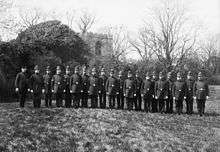
.png)